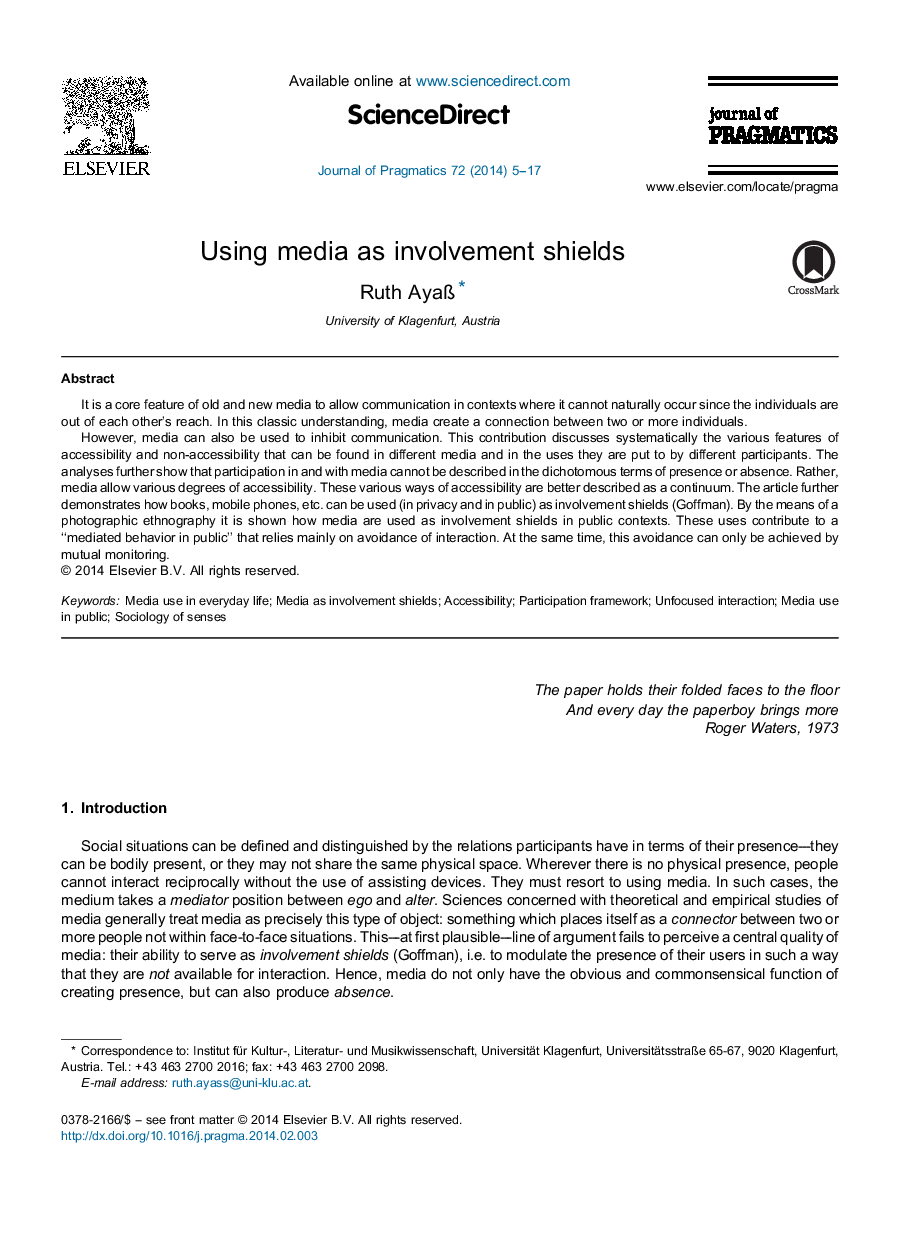| کد مقاله | کد نشریه | سال انتشار | مقاله انگلیسی | نسخه تمام متن |
|---|---|---|---|---|
| 932684 | 1474728 | 2014 | 13 صفحه PDF | دانلود رایگان |
• Uses of media as involvement shields in mobility gates and waiting areas.
• Displaying availability (and non-availability) in public contexts.
• Applicability of different media and different devices as involvement shields.
• Role of senses for being involved with different media (old and new).
• Absence and presence as a continuum, not a contrast pair.
It is a core feature of old and new media to allow communication in contexts where it cannot naturally occur since the individuals are out of each other's reach. In this classic understanding, media create a connection between two or more individuals.However, media can also be used to inhibit communication. This contribution discusses systematically the various features of accessibility and non-accessibility that can be found in different media and in the uses they are put to by different participants. The analyses further show that participation in and with media cannot be described in the dichotomous terms of presence or absence. Rather, media allow various degrees of accessibility. These various ways of accessibility are better described as a continuum. The article further demonstrates how books, mobile phones, etc. can be used (in privacy and in public) as involvement shields (Goffman). By the means of a photographic ethnography it is shown how media are used as involvement shields in public contexts. These uses contribute to a “mediated behavior in public” that relies mainly on avoidance of interaction. At the same time, this avoidance can only be achieved by mutual monitoring.
Journal: Journal of Pragmatics - Volume 72, October 2014, Pages 5–17
